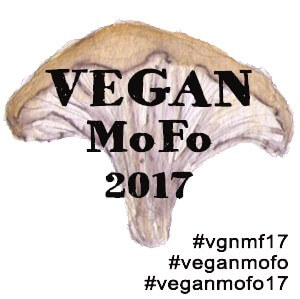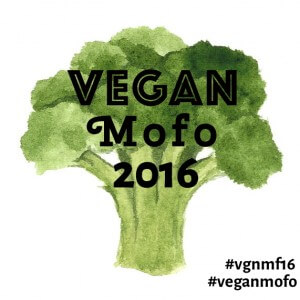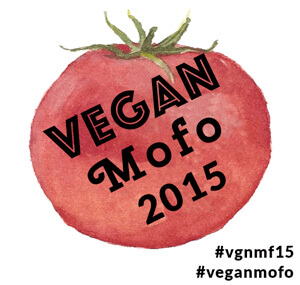
Shop on Amazon or Barnes and Noble
After reading Jenny Marie’s cook-a-long monthly challenge, I thought it would be fun to share some posts reviewing the book as well. If you have a blog with a review (specifically of the recipes), leave a comment and I will add you to the list.
This month I reviewed The Great Vegan Grains Book. I got it for Christmas this year, and I have been wanting this book for quite sometime. I wanted to know more about various different grains, and get more comfortable cooking with them in the kitchen. So let’s jump into the review!
Photos
Not every recipe has a photograph and that is okay. There is enough to sustain interest, all are beautiful and very inviting. They do a great job making the photos different enough from each other, especially when many of the dishes are pilafs, grain salads, etc. Almost all are in bowls, you know? They also make sure they take photos of dishes that need a photo- like polentas, balls, etc so that the reader understand what the dish is and should look like to prevent confusion.
Set-up
This has the classic layout of modern cookbooks, a short introduction then the recipes with some random staples in the back. The staples in the back were favorites from other cookbooks from the authors. I didn’t make any of these, but they looked good. The different recipe categories are Eye-Opening Grains (Breakfast), Grains Mains for All Appetites (Entrees), Super Side It with Grains (Side Dishes), and finally Great Grains Soups and Salads (Soups and Salads.)
Some of the recipes I felt like they could of bounced in and out of the various categories. I guess maybe the “side dishes” were best described as dishes you would serve with something else, not putting into a box of “grains” “vegetable” or “protein” category.
Writing
The writing style was good, but not particularly interesting. Oof… that sounds so much harsher than what I intend it to. I think the focus of the writers are the recipes, not on their writing style. And I think that is fine and good especially since people usually just go ahead and cook.
BUT…. I have a major complaint, think this book needs more writing! Simply put I remember seeing in Susan’s review that she didn’t seem to know (at the time) what einkorn was. Well, I feel like the authors could of done something better to try and make it more clear what each grain was. I get that if you don’t read the beginning it doesn’t make too much of a difference, but I have some ideas of how to make the differences more apparent. I think pointing out these differences are super important. Especially with corn. Yup, the authors don’t know much about corn, cause they give a recipe for grits, and it isn’t definitely not grits. Pretty much grits are of a finer consistency, and they are made from hominy (lime-treated corn) making it easier to digest. Although it is a subtle difference, I think it should be noted- especially since there are so many different wheat products listed in this book. No distinction of all the different rice varieties either, which there are many that can confuse a newbie.
Overview
Lately I feel like I’ve been slamming recipe books. So I will start with the good part about this book- the recipes rock! For a book about whole grains, these recipes are really simple and easy to make. At first I scoffed at the recipes as they called for already cooked grains most of the time, but I find that it made the dinners faster to cook. Just cook the grain over the weekend and freeze, or cook in the morning before work, storing it in the fridge. Then it is all super fast cooking for dinner. With the exception of the Berbere Kamut, I think everything was pretty easy, and not too time consuming. I think the authors REALLY got creative on ways to use up grains, and they were really thoughtful about cultural appropriation but still having a wide range of different ethnic foods to feature. I wasn’t wowed by the first recipe- the chickpea curry millet, but everything else has been great in the flavor department. I can see why Tamasin Noyes and Celine Steen have so many books under their belt.
But I have to be truthful- I am VERY disappointed with this book. One, as mentioned, is that there is too much wheat in this book. I have nothing against wheat. I think it can be great. But half of the recipes I made use wheat, and boy did I gravitate to those recipes. I had to really try and seek the non-wheat recipes. Part of the reason why I picked up this book is that I wanted to variate my grains, and in western society, wheat is the most common option. I am also sure that MANY people are trying to do gluten free by picking up this book, and this quickly narrow down the options.
My second biggest complaint is because of the title. If you are naming your book the “great grains book” I expect it to be BIGGER! If the book was just “The Vegan Whole Grains Cookbook” I would of been fine, but “GREAT grains BOOK” it implies a massive selection, and the lacking of “cook” from “book” suggests there will be lots of information. I know this seems a little critical, but I think this is what I wanted and expected in this cookbook, and it clearly fell short. Maybe I am a little nerdy and outdated with cookbook expectations, but I feel like they have completely stopped providing detailed information. If I did this cookbook I would of divided it by grain, giving instructions on how plainly cook the grain, provide information of the different variations, and give a few recipes. Then maybe there would be a chapter at the end with “mixed grain” recipes. Would some chapters be longer than others? Yeah, and that would be fine.
So did this book live up to my expectations? Mostly nope. I am a little bit more comfortable in the kitchen with certain grains, mostly wheat groats. Not so much the other stuff. Oh well. But I am still very happy to have this book because the recipes ARE good. And there are more recipes I want to try out in the future. I wouldn’t want to pay the retail suggested price of $23, but the lower Amazon and Barnes and Noble for $12-17 seems to be a perfect price in my opinion. So I recommend this book, just don’t expect an encyclopedia like I did.
Recipes
Apple Butter Einkorn Sloppy Joes
Section: Grain Mains for All Appetites
I am happy they didn’t just make a sloppy joe recipe, there is a nice little twist to it. I couldn’t find unsweetened apple butter, so I used tomato paste over ketchup to cut down on the sweetness. I think the ended up being a thicker filling, but I am okay with that.
This came together pretty quickly, which I am a little surprised about. It helps that you boil the einkorn and lentils together, but naturally this means a not so protein packed sloppy joe (compared to most other recipes) It also made much more than what I was anticipating.
Berbere Kamut with Avocado
Section: Grain Mains for All Appetites
Oh boy, did this recipe take FOREVER to make! You need to cook the grain that could take a whole hour, then you need to sautee the veggies, then add the grains to cook, then let sit. This is about a 2 hour recipe! Granted, there is LOTS of down time. You can easily make something else while this is being made, but it isn’t the best weeknight dish for working folk.
The dish also claims to serve 4-6 people. Uh… my husband and I both ate the whole dish! XD I did the calorie basics, and got about 600+ calorie meals, which truthfully isn’t the worst. Overall the dish was really tasty. I liked the combo is the grains, creamy avocado, and sweet potatoes. The berbere spice did a great job countering the sweetness from the potatoes and carrots. Sadly, due to the long cooktime, I can’t imagine making this anytime soon.
Blueberry Polenta Triangles
Section: Eye-Opening Grains
Regular readers may know by now I am not very good about breakfast. I REALLY need to go out of my way to make the breakfast recipes from a cookbook. This one, after quickly glancing, really focuses on porridges for a breakfast meal. I think it is great way to go since once you figure out how to make oatmeal- your options are endless. Same goes for wheat groats, grits, or anything else really.
So I thought I would challenge myself to making these polenta triangles. I’m not going to lie I didn’t really make polenta. I used pinole, which is pretty much a fancy name for purple roasted cornmeal. I got it thinking I would try it out with Wolfie- didn’t take. So I figured try it again in this recipe.
Just like his Mom, he hates polenta in it’s liquid form. It took awhile since you need to have it set, but you could do that the night before. Otherwise it was a simple slice and grill procedure. The result was a super dark polenta triangle, that was probably loaded with sugar, though it didn’t TASTE like it. It is worth noting that the pinole I used was technically the tart cherry and lemon flavor, although I barely could taste that flavoring.
Chickpea Millet Curry
Section: Grain Mains for All Appetites
This probably could of been better. It felt a little lacking if this was going to be served as a main. I am sure there was issues with the fact that I probably was using old millet. BUT ignoring that, I would of liked to see more veggies packed in here. It wouldn’t of been too hard.
But on the flip side, since there weren’t many veggies this made it super easy to put together. I was able to get it all together really fast and it was super easy. I doubled the recipe so we would have leftovers and on the second night we served it with tandoori tofu.
Harissa Veggies and Rice Skillet
Section: Super Side It With Grains
First it is driving me nuts that there are photos of beans for this dish. Sure it says that you can ADD beans to make it a complete protein, but then just add beans to the dish. I find this weird.
Anyways, this is pretty much a stir-fried rice recipe with a little twist, using harissa instead of your normal soy sauce. I liked this dish, though I thought they could be more veggies in it since VEGGIES are in the title. Maybe a summer squash quickly sauteed in?
I liked this dish because it was an easy way to use leftover brown rice, though I know fresh brown rice probably will have a better result. I added some seitan to the dish to make it more of a main meal. Even though it says it is mild, the harissa from Trader Joe’s does give this dish a fair bite.
Hummus-in-the-Making Kamut Stew
Section: Great Grains Soups & Salads
For starters I didn’t use kamut. I used… einkorn. *gasp* I know. my biggest complaint about this book is the various ways of using wheat. Why?! It isn’t baking where it makes such a difference. Anywho…
This recipe had all the flavors working for it. But it takes a little more of your attention than normal because of the tahini. It is easy to curdle, and hey I did that. But aside from that it was a pretty tasty, though the consistency as pretty hard to pin down. The book called it st-oup (stew-soup) but I think this was more like a curry. I could of served this as an open faced sandwich or over a bed of rice.
Indian Wheatballs
Variation from: Italian Wheatballs
Section: Super Side It With Grains
This recipe reminds me of what I like to do when I make any sort of “ball.” I double the recipe and freeze whatever I don’t use. This recipe pretty much makes you overbake your balls, making it dry and hard like TVP or soy curls. You then cook the balls by boiling them in water, so if you want to make these the day of, it will take a REALLY long time. But if you want to make things in bulk, this makes it so they can freeze and last a really long time.
Also from doing this overbaking method you get a really toothsome ball. But I got really inconsistent results. Some balls were really tough, and some were pretty awesome. Some literally was split down the middle with the texture. But they were really full of flavor and I could appreciate them, but it just felt like they weren’t 100% on for me. I can say I really enjoy the different approach.
Quinoa and Beer Onion Rings
Section: Super Side It With Grains
We’ll have to classify this as “TBD” for how good this is. See, I tried last minute to make these over baked onion rings, and this recipe CLEARLY doesn’t work for that. So why bother posting about it? Well, I think the idea of using quinoa as bread crumbs probably would work, and probably will taste awesome. If you want to give this recipe a go, I think you should, just DON’T BAKE THEM! It doesn’t work XD
Sort-Of-Like-A-Samosa Soup
Section: Great Grain Soups and Salads
This soup uses the Indian Wheatballs as the grain (which ends up using bulgar) making less of a samosa soup and more of a Indian styled “meatball” soup. I really enjoyed this dish overall. I think I would choose a different “meatball” but the wheatballs do well in the broth, which most would not. Once you have the wheatballs made, everything comes together quickly, and most of the time is spent simmering the soup.















Susan
Nice to read your review of this. I still haven’t ever found einkorn here!
I definitely find the suggested serving sizes in this book tend to be a little on the small side, I am a hungry person!
I like your idea of organising the recipes by grain.
Jennifer
Maybe einkorn doesn’t get exported to Australia? I haven’t really noticed anything really jarringly different between using wheat berries, kamut, or einkorn, but I might if i ever tried to do a side by side taste test I guess.
Sarah
That’s unfortunate that the book was disappointing. It sounds like it has some good moments but I definitely see what you mean with your critiques. I like the idea of the polenta triangles with blueberry. It sounds like a yummy combination, maybe with a few tweaks.
Jennifer
Yeah, the polenta triangles were nice, and I finally got Wolfie to eat the cornmeal that I bought. He apparently doesn’t like them as a porridge.